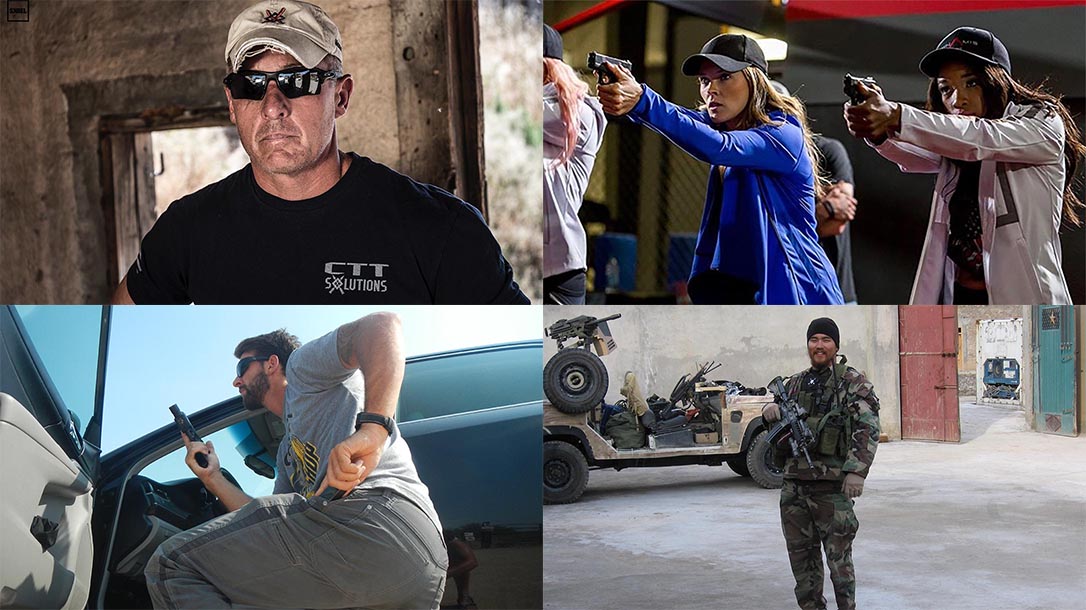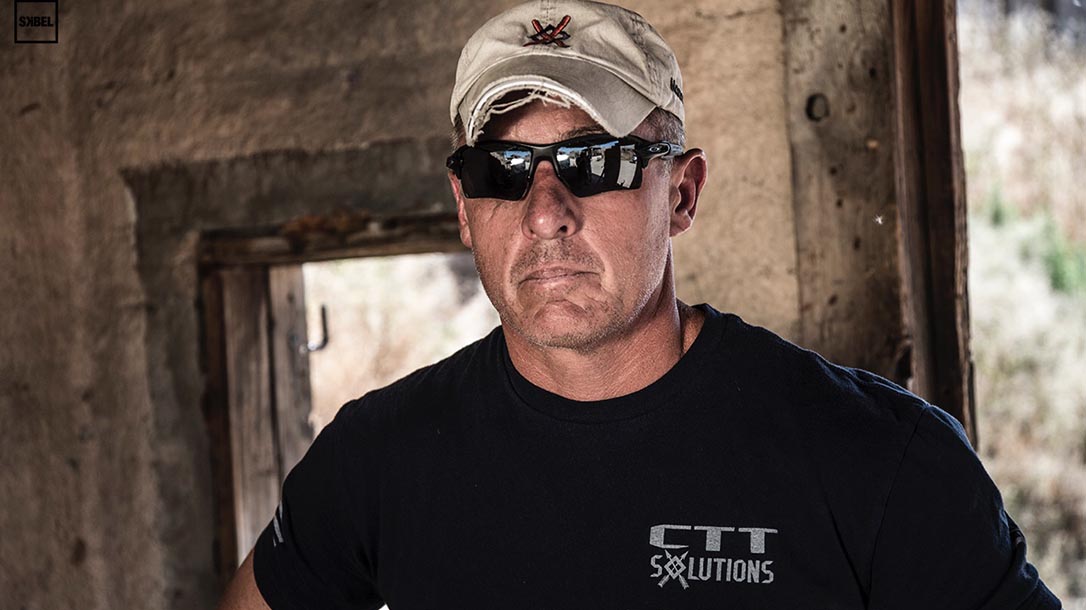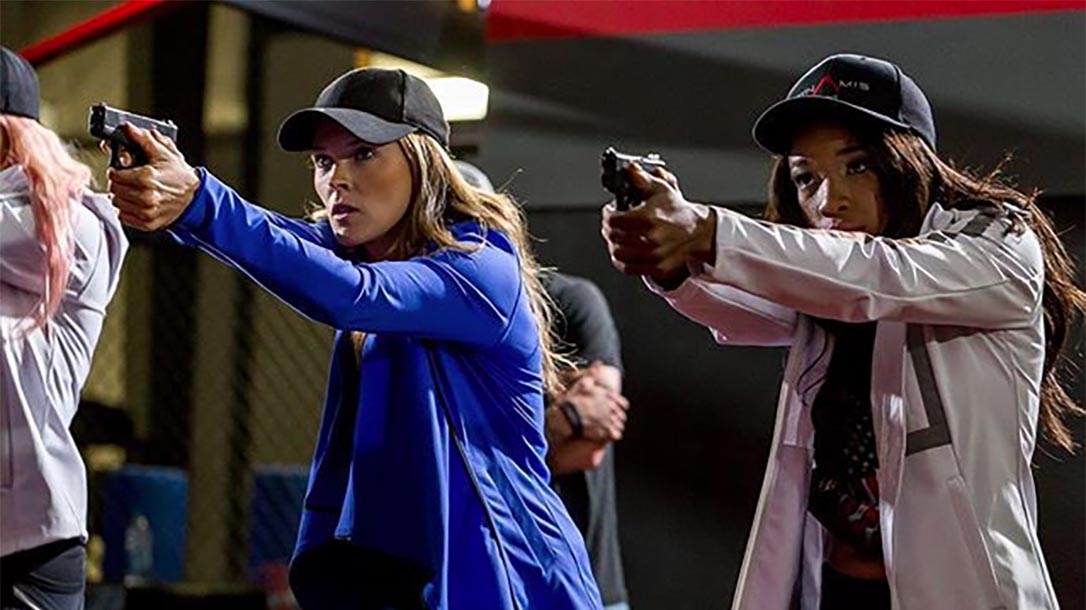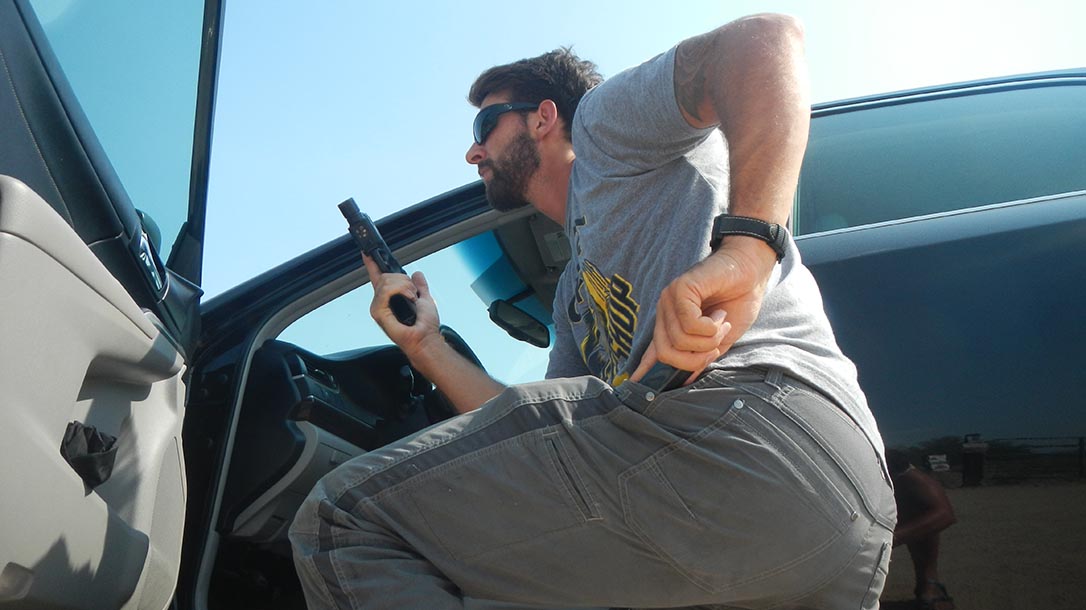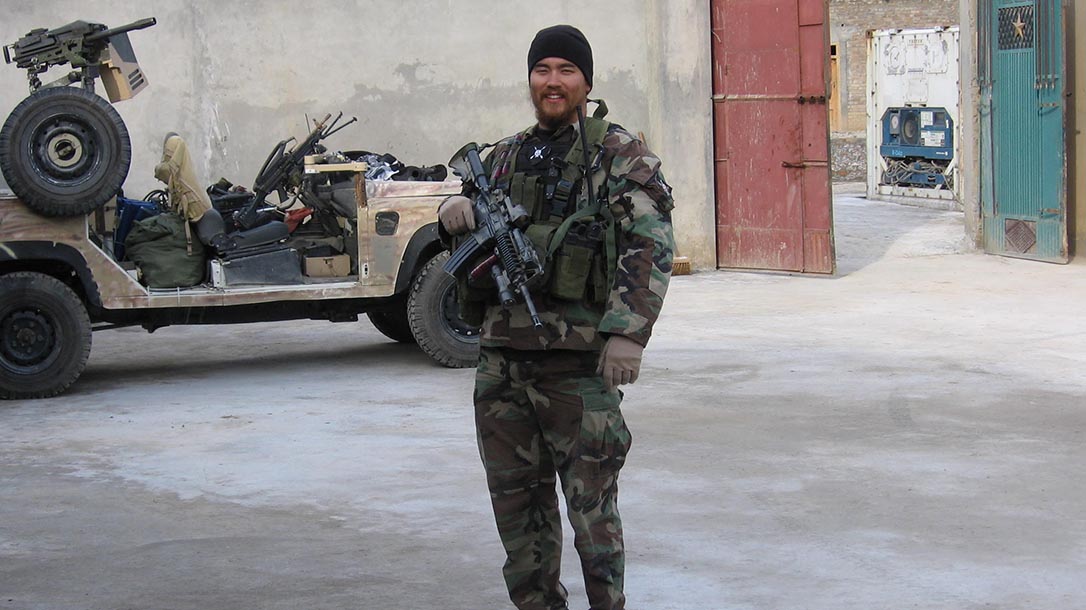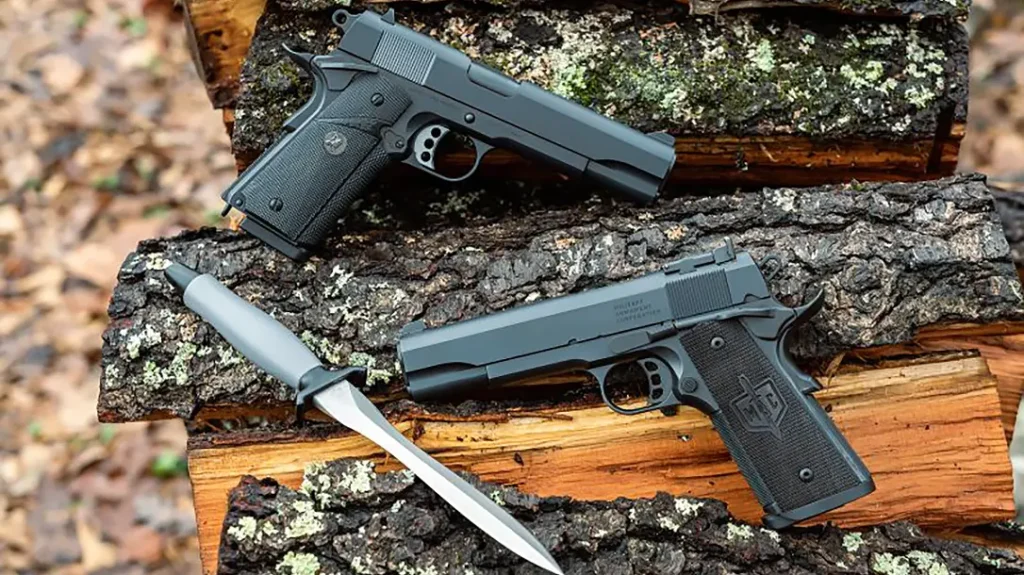Everyday carry (EDC) no longer only refers to a concealed pistol and a CCW permit. As the discipline evolves, equipment such as tourniquets and survival kits are going from the realm of soldiers and cops to join everyday Americans. Carrying a concealed firearm is not always an option, however. Whether on vacation in foreign lands or in a “gun-free zone,” our surrounding environment might force us to shift to non-lethal instruments for self-defense.
For these reasons, we’ve assembled a panel of experts to get their take on what you need for both lethal and non-lethal setups in a variety of conditions.
Advertisement — Continue Reading Below
MIKE PANNONE: Lethal & Non-Lethal Setups
U.S. Army Special Operations veteran, founder of CTT Solutions
What is your current setup for personal protection?
I carry a CZ P-07 in an appendix rig. If I’m wearing lighter garments due to heat, I always double check to ensure I’m not printing. All of my vehicles have the equivalent of an IFAK plus extra tourniquets. Additionally, we always carry a backup charging device and accessory cables for our phones, because sometimes good comms might be what saves you, not a weapon.
Advertisement — Continue Reading Below
Understanding your family’s differences in ability, what do you encourage them to carry?
My wife is a very competent shooter, and she carries a 9mm M&P Shield, also in an appendix holster. Her holster allows her to clip it in various locations, so she can put in in a purse, a backpack or just wear it on her body.
In our house, we’ve rehearsed different contingencies for addressing hostile incidents. If our daughter is present, my wife will take her and I’ll address the problem. If it’s just my wife and I, I’ll cover her withdrawal, and she’ll call for help. Because of my background, we agree that I’m the one that will call the shots, but if my wife sees something important going on, we know how to flex as necessary.
Advertisement — Continue Reading Below
If you couldn’t carry a firearm on vacation, what type of non-lethal protection would you use?
First, I look on the State Department website and do a quick area study of the country and any criminal or terrorist trends. Next, I’ll look at the city being traveled to and the police station and hospitals relative to my lodging location. Finally, I’ll look for terrain features or easily identifiable buildings as reference points. I want to be able to say, “If the river is to my left, then I’m heading south,” or “If the church steeple is to my west, then the hospital is generally west by northwest.” That is urban navigation and terrain association. To do that effectively and precisely, I always have a small compass.
If I can’t bring any weapons of any type, then I look for impact and edged weapons that are locally procurable. A good flashlight is a must. I carry either a SureFire Executive or Back-Up overseas, and they’re useful for many tasks. These lights are great impact weapons that are legal all over the world. Small edged improvised weapons are also available anywhere in the world, so that’s not an issue.
Advertisement — Continue Reading Below
As for family planning, we always have “check-in” time windows when out and no-contact linkup points. If someone misses the scheduled call, then we begin moving to that point, and if they miss a second call and are not at the linkup point, we notify the local authorities.
AMY ROBBINS: Lethal & Non-Lethal Setups
Fashionista, founder of Alexo Athletica
Advertisement — Continue Reading Below
What is your current setup for personal protection?
For fashion-conscious women, we face many challenges when it comes to both our safety and how we carry. I constantly ask myself, “On or off body?” If I’m wearing a knee-length dress, can I wear a thigh-high holster? If I do, will it print, or do I need to carry in a purse? This might seem as simple as switching holsters, but what I wear actually determines which firearm I carry. If I’m carrying a bag, I’m comfortable concealing a Sig Sauer P938. If I’m wearing workout clothes or jeans, I might switch it up to a Glock 43 in a Kydex holster.
Since outfits determine EDC setups, what advice would you give women about firearm selection and clothing options?
Advertisement — Continue Reading Below
No matter what, discretion should be the main criteria. Matching outfits with guns can feel overwhelming, but it doesn’t have to be. Carry what you want and make sure that you familiarize yourself with different holster locations or equipment configurations. This is critical. If you’re going to switch between carrying on- and off-body, always practice drawing from those different positions.
If you couldn’t carry a firearm on vacation, what type of non-lethal protection would you use?
My first layer of protection is always situational awareness. This goes for both concealed-carry firearms and non-lethal options. For women, it is so important to be familiar with the self- reliant mindset that says, “I’m going to take care of myself.” If I cannot legally carry a firearm, I try to carry a small knife that I can put in a clutch or in
my yoga pants.
Advertisement — Continue Reading Below
If you’re traveling and can’t get your hands on a knife, you can still improvise with other devices for self-defense. As women, it’s not unusual that we travel with Mace or some kind of pepper spray. Still, that might not be acceptable in foreign countries. This is why I encourage women to familiarize themselves with common items such as pens and flashlights. You likely won’t win a fight with either, but they afford some advantages with striking and might be enough for you to create space and run.
All this being said, be smart. Always know the rules for where you’re traveling. You don’t want to be sipping margaritas one minute, then get locked in a foreign prison the next. If you can’t carry anything, remember that a good old-fashioned knee to the groin can work wonders.
Advertisement — Continue Reading Below
BRENT PHILIPS: Lethal & Non-Lethal Setups
U.S. Marine Corps Special Operations veteran, founder of SOFLETE
What is your current setup for personal protection?
In combat, gear selection primarily depends on your mission and the enemy’s most likely course of action. Overseas, I selected gear with a modular mindset. I’d have a basic loadout, or a Level Zero setup that would apply to low-intensity missions. A Level One setup increased my lethal capacity based on the environment, and a Level Two setup did so even more by adding additional weapons or different munition types. I approach self-defense with the same mindset.
My Level Zero kit is a phone, a wallet and a carabiner on a keychain. Level One is all of that plus a compact pistol with an attached light, and an extra magazine in my pocket. My pistol either stays inside my waistband, or I place it in my truck during long rides. Also within my truck is a full military-style blowout kit as well as a basic first-aid kit. I’ve had reality check me a few times, and I’d be searching through an IFAK for a Band-Aid, creating a mess with equipment and having to repack everything after I found whatever I needed.
Understanding your family’s differences in ability, what do you encourage them to carry?
My wife is a competent hobby shooter—she has an M&P Pro CORE that has never been carried for self-defense. She’s safe and shoots very well, but we had early talks about her ability to take another human life, and she decided not to carry. Instead, she’ll run like hell and scream for help.
Is this confusing? Shouldn’t I be teaching her to defend herself? Insert whichever fear-based motivational quote you want, but not everyone is mentally prepared to commit violent acts, even in their own defense. I love my wife, and I’m not going to keep her alive by lying to her about her ability.
Luckily, my wife has a very strong sense of self-preservation and always stays away from areas that are likely to end up bad for her. Besides, we have a large dog that can be aggressive when necessary, and I’d argue that he is arguably more valuable as a deterrent than a concealed pistol.
If you couldn’t carry a firearm on vacation, what type of non-lethal protection would you use?
First off, I live in the dirty white. You won’t find it on Colonel Cooper’s color code, but it’s essentially when you’re happy as a clam until you’re triggered and move into the yellow. I don’t live on edge. Although I take note of the atmosphere when I enter a room, I’m not constantly scanning for threats.
Before heading on vacation, I’ll check the crime rates for the immediate area and where I might venture. Once there, you’ll typically find me in flip flops and a T-shirt, unshaven with messy hair. Fortunately, at 6’2” and 210 pounds, I don’t really come across as the softest target for random acts of robbery.
However, a relaxed mind is different than a complacent mind. I still find it necessary to have something that can be used as a blunt striking instrument if necessary. In one situation, I held a doorway with an aggressive posture and displayed my willingness to use a giant Maglite in self-defense. The guys looking to scuffle decided getting cracked over the head with a metal flashlight wasn’t worth it.
If I’m out on the street, I keep throwaway cash (my large cash wad is hidden), my trusty carabiner (it works great for punching things), a sturdy pen and sometimes a sturdy flashlight. I prefer blunt weapons to sharp ones because people take a long time to bleed out to the point of no longer being a threat. But if you get hammer fisted with a heavy tube of metal, it will likely put you down instantly.
After traveling all over the world by myself for both business and leisure, I offer this advice: Know who you are, where you are going and how to stay away from danger. The best way to win a fight is by avoiding it. Logical planning based on facts and actual data can keep you happy and enjoying life, instead of having to sit with your back to the wall because some instructor told you to.
MIKE GLOVER: Lethal & Non-Lethal Setups
U.S. Army Special Forces veteran, founder of Fieldcraft Survival
What is your current setup for personal protection?
A Glock 17, a SureFire Mini Scout, a knife and a RATS Tourniquet. I also carry spare cash and a handcuff key in my wallet. In my truck, I keep a Fieldcraft survival kit and a North American Rescue trauma kit.
Understanding your family’s differences in ability, what do you encourage them to carry?
If it’s a novice shooter, I recommend a hammerless revolver like a Ruger LCR. The minimal moving components allows for ease with acquiring a shot solution. I’m also a fan of the Glock 43 because it’s easily concealed and can be utilized by a family member with minimal training.
If you couldn’t carry a firearm on vacation, what type of non-lethal protection would you use?
In foreign countries, I recommend commercial off-the-shelf solutions for defense. You don’t get to pick the laws of the country you’re visiting, but if knives and batons aren’t illegal, you should definitely consider getting something you can at least stow in a vehicle or hotel room.
On my person, I always carry a RATS tourniquet because of the dual purpose of using it as cordage or a lanyard, and because it looks like a bungee and is less conspicuous than an actual tourniquet. Depending on where you’re traveling, a tactical tourniquet might not be the best thing to have going through airport security.
Lastly, I recommend you perform a map reconnaissance of the area you’re visiting and research current security situations on the ground. You should know key locations like the U.S. embassy for seeking refuge, or if there is a location where ex-pats congregate, as they might be able to provide a safe haven or at least speak the same language.
